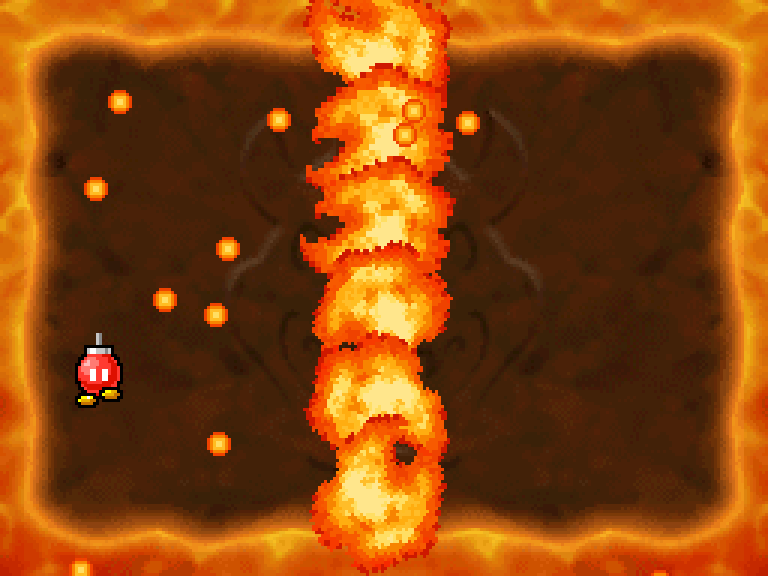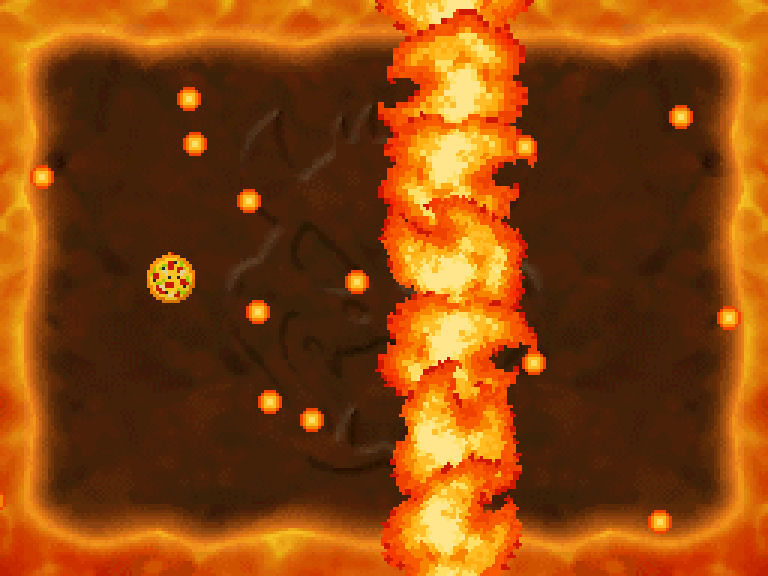Tutorial 2: Editing a File in a NARC Archive¶
This tutorial will explain the process of opening a NARC archive file, extracting a file from it, putting a modified version of the file back into the NARC archive, and saving the modified ROM.
If you’ve completed the first tutorial (Tutorial 1: Editing a File in a ROM), this will feel extremely familiar. NARCs are more-or-less like miniature ROMs that only have files and filenames, so the ndspy APIs for ROMs and NARCs are very similar.
See also
If you haven’t tried the first two tutorials yet, I recommend you do so:
- Tutorial 0: Getting Started: This tutorial helps you check that you have ndspy installed and set up correctly.
- Tutorial 1: Editing a File in a ROM: This one is written at a slower pace than the other tutorials, and serves as a gentle introduction to help you get a feel for how to use ndspy in general.
Opening the NARC¶
We’ll begin by importing ndspy.narc, the ndspy module for NARC
archives. Make a new, empty Python file (say,
narc_files_tutorial.py), and put the following in it:
1 | import ndspy.narc |
You can test it at this point if you want to check that it runs correctly, but it won’t do a whole lot!
Next, we need to open a NARC using the NARC class. If your NARC
is within a ROM file, you can use ndspy.rom to get the NARC data
and pass it to NARC’s default constructor, like so:
1 2 3 4 5 6 | import ndspy.narc import ndspy.rom rom = ndspy.rom.NintendoDSRom('nsmb.nds') narcData = rom.files[169] narc = ndspy.narc.NARC(narcData) |
However, for brevity, I’ll be assuming from here on that your NARC is a
standalone file, so that I can use the fromFile() class method to load
it in a single line instead:
1 2 3 | import ndspy.narc narc = ndspy.narc.NARC.fromFile('vs_escape.narc') |
You can substitute the ROM-loading code if you prefer, though, of course.
Warning
I’m using narc here as the variable name for the
NARC object, since it represents a NARC. Be sure not to
confuse that with ndspy.narc, which is the module containing the
NARC class!
And the same goes for the variable name rom versus the module
ndspy.rom, in a few places.
Either way, now we have a NARC object. We can print it out to see
all of its file IDs, folders and filenames, and the first few bytes of each
file:
1 2 3 4 | import ndspy.narc narc = ndspy.narc.NARC.fromFile('vs_escape.narc') print(narc) |
<narc endiannessOfBeginning='>'
0000 vs_escape/
0000 d_2d_mgvs_bg_escape_down_ncg.bin b'\x10\0\x80\0?\0\0\xf0\1\xf0\x13\xf0%\xf07\xf0'...
0001 d_2d_mgvs_bg_escape_down_ncl.bin b'\x1f\03\tU\t:\1\x97\tz\5\x9b\5\xb9\r'...
0002 d_2d_mgvs_bg_escape_down_nsc.bin b'\x10\0\x08\0\0\x90\x82\x91\xe2\x92\x82\x93\x82\0\x94\xe2'...
0003 d_2d_mgvs_bg_escape_up1_nsc.bin b'\x10\0\x08\0\0\xc7\xa1\xc8\xa1\xc9\xb1\xca\x91\0\xcb\x81'...
0004 d_2d_mgvs_bg_escape_up2_nsc.bin b'\x10\0\x08\0 \x7f3\xf0\1\xfb5\xfa5\xf9\05'...
0005 d_2d_mgvs_bg_escape_up3_nsc.bin b'\x10\0\x08\00\x7f3\xf0\1p\1\x96\xd5\x96\xd1\xe0'...
0006 d_2d_mgvs_bg_escape_up_ncg.bin b'\x10\0\x80\0?\0\0\xf0\1\xf0\x13\xf0%\xf07\xf0'...
0007 d_2d_mgvs_bg_escape_up_ncl.bin b'\x94z\0\0\0\0\0\0\0\0\0\0\0\0\0\0'...
0008 d_2d_mgvs_escape_ncg.bin b'\x10\0@\06\0\0\xf0\1\x80\x130\xf0\x1fp1'...
0009 d_2d_mgvs_escape_ncl.bin b'\xa7}\0\0\xff\x7f\x18c\x10B\x08!\xff\3\xbc\2'...
>
Note
Don’t worry about the endiannessOfBeginning part too much; it just
means that ndspy noticed that the NARC file data had a slightly
nonstandard header, which it will match when we resave the file.
If, however, you’re planning on making a new NARC from scratch
for a game that uses NARCs with these nonstandard headers, you’ll have
to remember to set NARC.endiannessOfBeginning to '>'
yourself!
Extracting a file¶
I’m going to extract d_2d_mgvs_escape_ncg.bin and
d_2d_mgvs_escape_ncl.bin, which are the sprite graphics and palette for
New Super Mario Bros.’s “Danger, Bob-omb! Danger!” minigame.

What the minigame looks like in regular New Super Mario Bros. You use the touch screen to drag the Bob-Omb around, and dodge the fire columns and fireballs. I wonder if there’s a way all of this excess heat could be put to good use…
Note
If you’re not yet familiar with the relationship between files,
filenames, and file IDs in NARCs, I recommend you read the documentation
on this topic in the introductory material for the ndspy.fnt
module (which is used internally by ndspy.narc):
Filenames and file IDs.
What you really need to know, though, is that files are fundamentally accessed by ID, and IDs are indices into a list of all files in the NARC. Filename tables are separate, exist only for convenience, and simply map file (and folder) names to file IDs.
It’s also worth mentioning that, while NARC file IDs work the same way as ROM file IDs, they’re completely separate from the file IDs of the enclosing ROM, if there is one.
We can see from the NARC printout we made earlier that these two files have file IDs 8 and 9 respectively; thus, we can access their data directly using those indices:
1 2 3 4 5 6 | import ndspy.narc narc = ndspy.narc.NARC.fromFile('vs_escape.narc') ncgData = narc.files[8] nclData = narc.files[9] |
Or we could use the NARC class’s helper function that looks up a
filename in the filenames table to get a file ID, and retrieves the
corresponding file data directly:
1 2 3 4 5 6 | import ndspy.narc narc = ndspy.narc.NARC.fromFile('vs_escape.narc') ncgData = narc.getFileByName('vs_escape/d_2d_mgvs_escape_ncg.bin') nclData = narc.getFileByName('vs_escape/d_2d_mgvs_escape_ncl.bin') |
Either way, we’ve now got bytes objects containing the data for the
files we’re interested in.
Now it’s time to edit the files. If ndspy supports editing the file formats in
question, you can just import the appropriate modules and edit the files that
way. (In this particular example case, the NCL and NCG files can be edited
using the ndspy.lz10 and ndspy.graphics2D modules, which is
what I did at this point.) If you instead want to save the files externally to
edit using some other tool, you can of course do that as well:
1 2 3 4 5 6 7 8 9 10 11 | import ndspy.narc narc = ndspy.narc.NARC.fromFile('vs_escape.narc') ncgData = narc.getFileByName('vs_escape/d_2d_mgvs_escape_ncg.bin') nclData = narc.getFileByName('vs_escape/d_2d_mgvs_escape_ncl.bin') with open('d_2d_mgvs_escape_ncg.bin', 'wb') as f: f.write(ncgData) with open('d_2d_mgvs_escape_ncl.bin', 'wb') as f: f.write(nclData) |
Replacing a file¶
Once you’re done editing your file, we can go ahead and put it back in the NARC.
If (like me) you modified the bytes objects from the NARC using
other ndspy modules, you’ll already have the modified file data as
bytes objects. But if you instead saved your file externally to
edit with something else, you’ll need to load its data back in:
1 2 3 4 5 6 7 8 | import ndspy.narc narc = ndspy.narc.NARC.fromFile('vs_escape.narc') with open('d_2d_mgvs_escape_ncg_edited.bin', 'rb') as f: ncgData = f.read() with open('d_2d_mgvs_escape_ncl_edited.bin', 'rb') as f: nclData = f.read() |
Now we can put the data back into the NARC, either by file ID:
1 2 3 4 5 6 7 8 9 10 11 | import ndspy.narc narc = ndspy.narc.NARC.fromFile('vs_escape.narc') with open('d_2d_mgvs_escape_ncg_edited.bin', 'rb') as f: ncgData = f.read() with open('d_2d_mgvs_escape_ncl_edited.bin', 'rb') as f: nclData = f.read() narc.files[8] = ncgData narc.files[9] = nclData |
Or by filename:
1 2 3 4 5 6 7 8 9 10 11 | import ndspy.narc narc = ndspy.narc.NARC.fromFile('vs_escape.narc') with open('d_2d_mgvs_escape_ncg_edited.bin', 'rb') as f: ncgData = f.read() with open('d_2d_mgvs_escape_ncl_edited.bin', 'rb') as f: nclData = f.read() narc.setFileByName('vs_escape/d_2d_mgvs_escape_ncg.bin', ncgData) narc.setFileByName('vs_escape/d_2d_mgvs_escape_ncl.bin', nclData) |
Saving the NARC¶
All that’s left now is to resave the NARC. If you want to put it into a ROM,
you should use the NARC’s .save() function to get a bytes,
suitable for the ROM’s .files list:
1 2 3 4 5 6 7 8 9 10 11 12 13 14 15 16 | import ndspy.narc import ndspy.rom rom = ndspy.rom.NintendoDSRom('nsmb.nds') narc = ndspy.narc.NARC.fromFile('vs_escape.narc') with open('d_2d_mgvs_escape_ncg_edited.bin', 'rb') as f: ncgData = f.read() with open('d_2d_mgvs_escape_ncl_edited.bin', 'rb') as f: nclData = f.read() narc.setFileByName('vs_escape/d_2d_mgvs_escape_ncg.bin', ncgData) narc.setFileByName('vs_escape/d_2d_mgvs_escape_ncl.bin', nclData) rom.files[169] = narc.save() |
(Don’t forget to save the ROM itself when you’re done with it, too!)
Or if you just want to save it as its own file, that can be done using the
.saveToFile() function:
1 2 3 4 5 6 7 8 9 10 11 12 13 | import ndspy.narc narc = ndspy.narc.NARC.fromFile('vs_escape.narc') with open('d_2d_mgvs_escape_ncg_edited.bin', 'rb') as f: ncgData = f.read() with open('d_2d_mgvs_escape_ncl_edited.bin', 'rb') as f: nclData = f.read() narc.setFileByName('vs_escape/d_2d_mgvs_escape_ncg.bin', ncgData) narc.setFileByName('vs_escape/d_2d_mgvs_escape_ncl.bin', nclData) narc.saveToFile('vs_escape_edited.narc') |
And, well, that’s it! Have fun with your newly modified NARC file.
